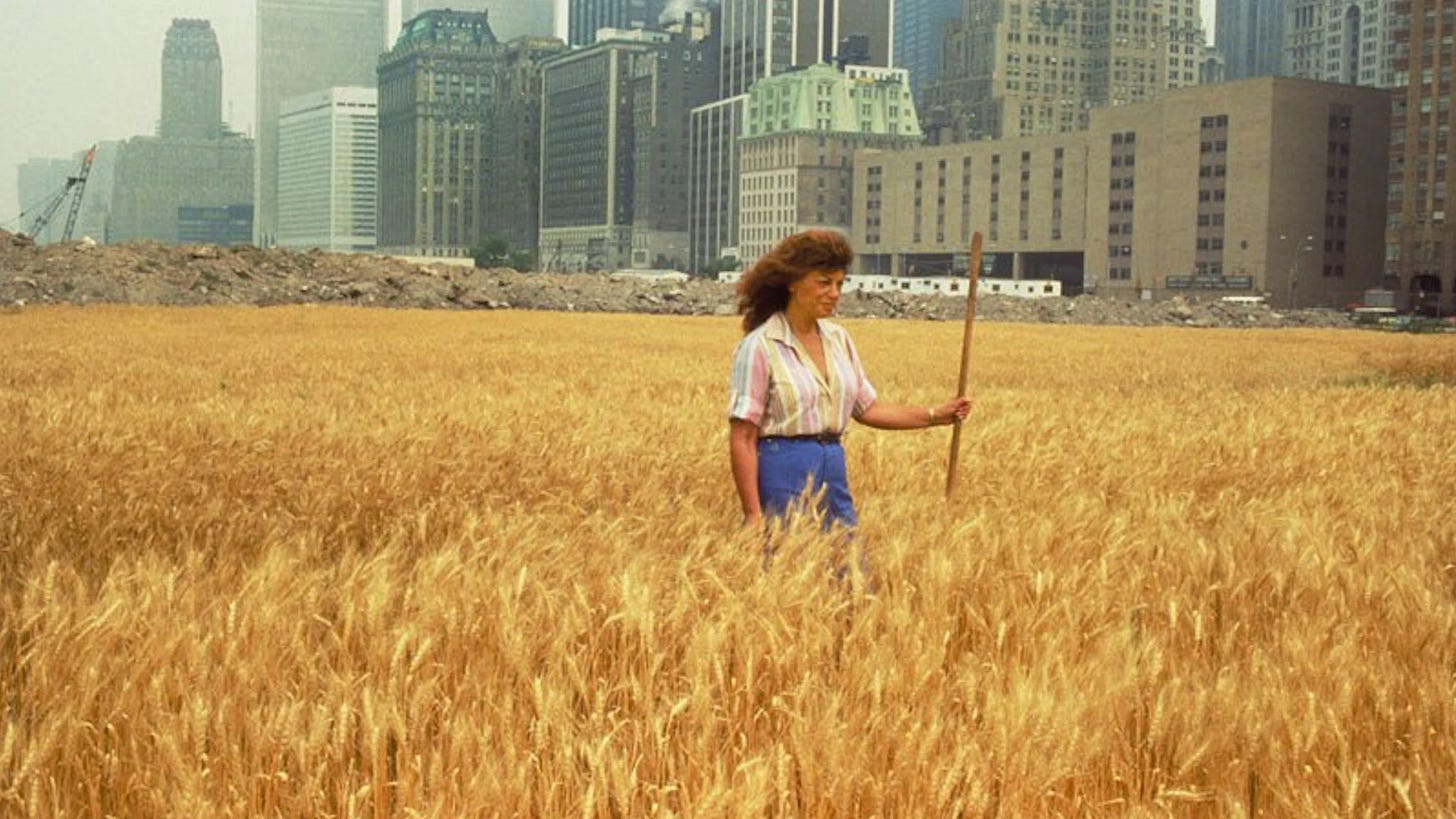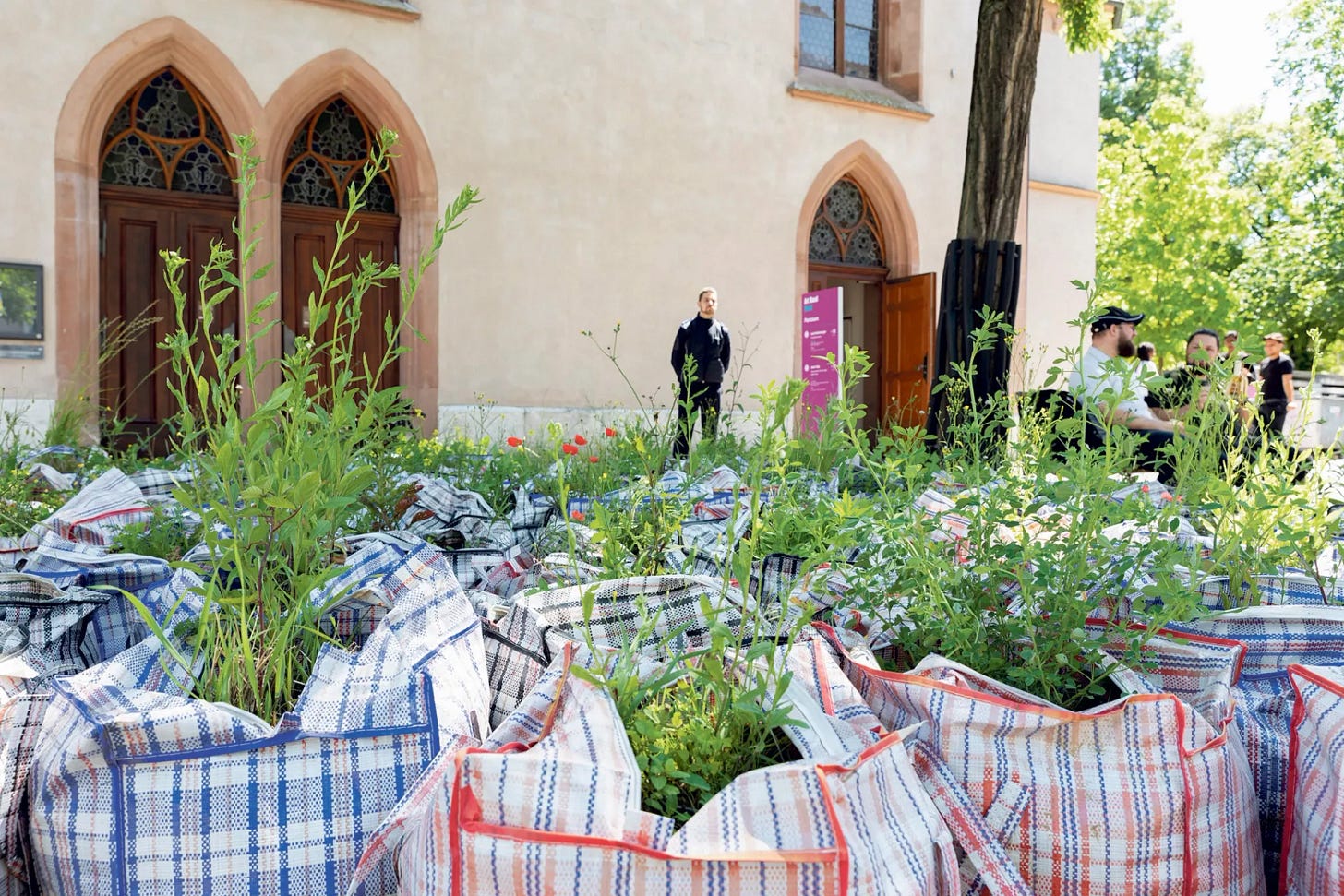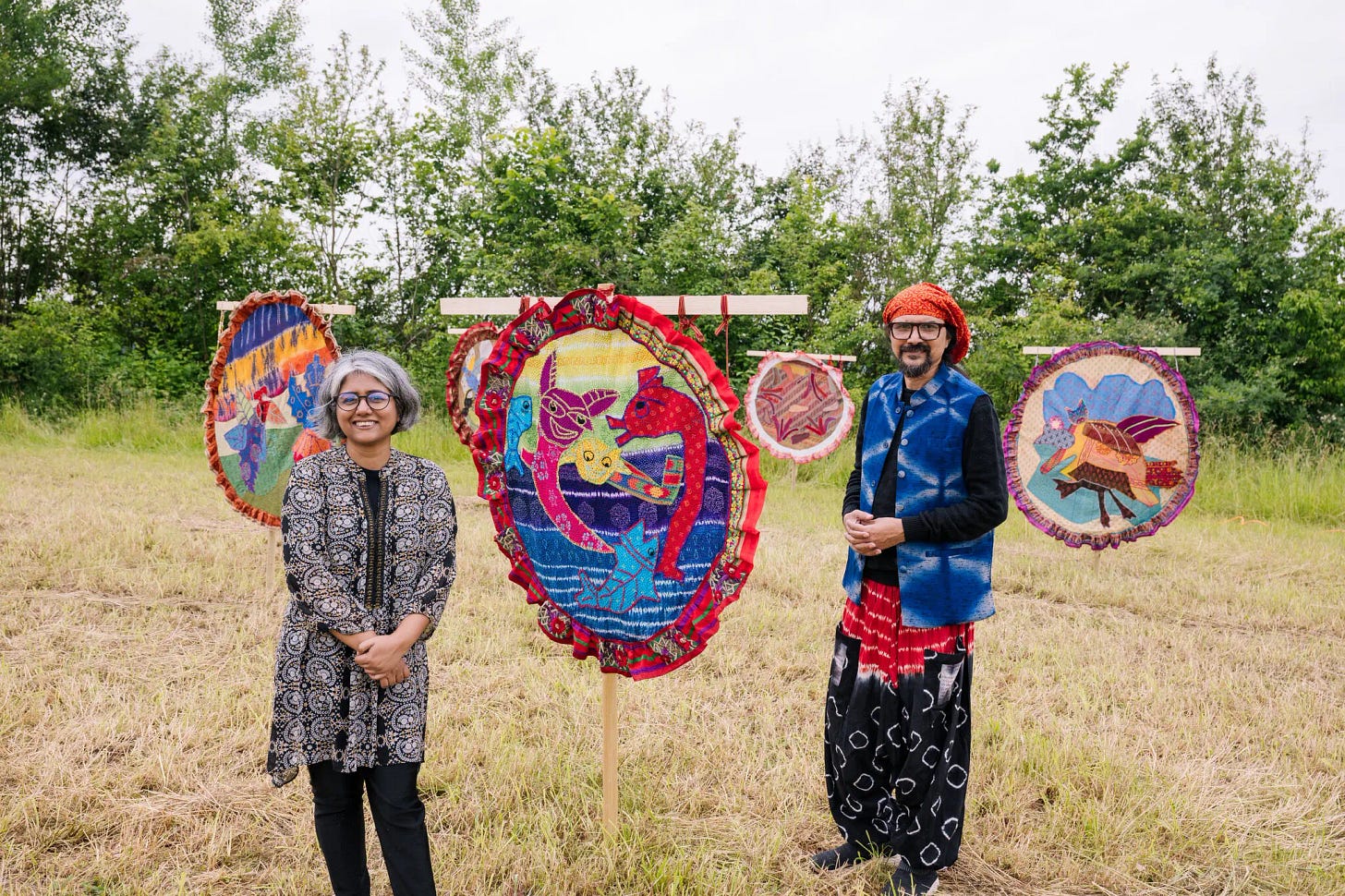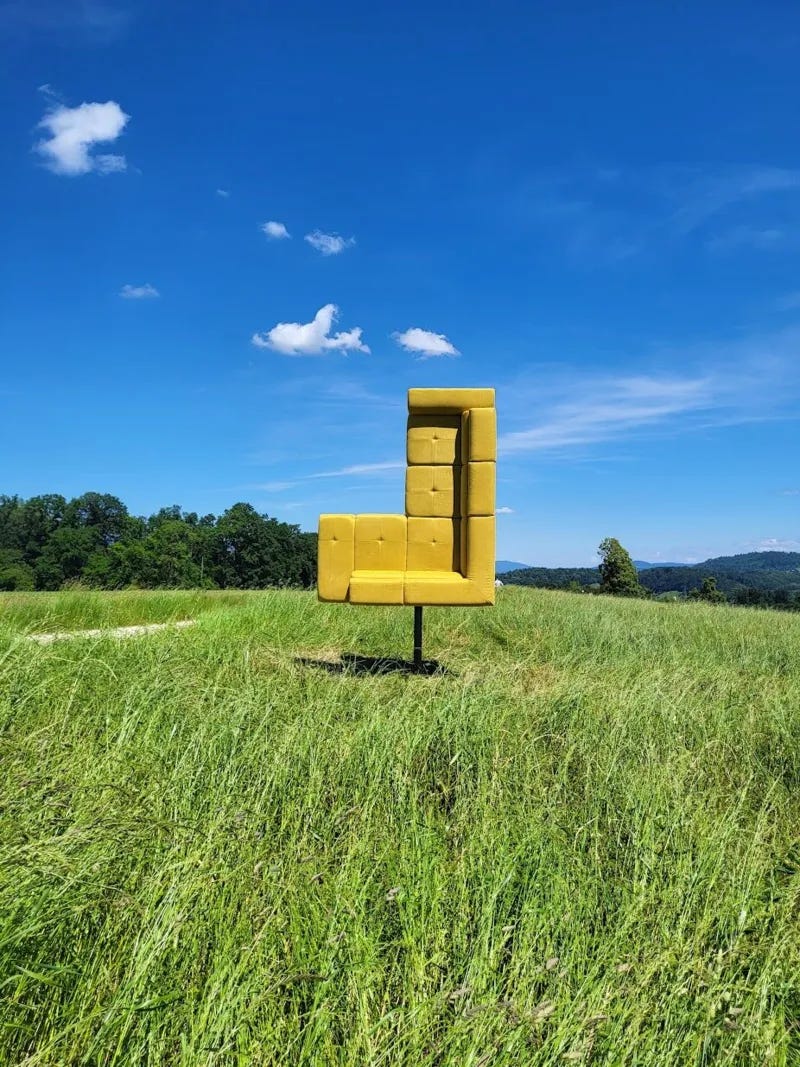Hello and welcome back to artplace.
Last week’s post was a popular one, so if you’re new here, thank you for joining us! From now on you’ll receive a weekly post delivered straight to your inbox featuring the most exciting art world news, events, and personalities, along with tips to help you navigate it all.
This week’s post is dedicated to the renowned art fair Art Basel, which opens to the public today after three days of invite only VIP previews. This year, Art Basel has taken interesting steps to enhance the experience of art viewing (and buying) beyond the typical white walls of a commercial art fair booth. Whilst the indoor maze of booths still remain central to the fair, an unprecedented array of outdoor art is also currently on view throughout Basel, more so than in any of its previous editions. This move underscores the evolving intentions of art institutions to innovate their curatorial approaches and embrace unconventional modes of display.
Louisa Elderton captures the essence of this trend perfectly in her latest article for Artnet News, where she cites the pandemic, remote work, the climate crisis and even the viral TikTok trend of ‘cottagecore’ as reasons for a renewed cultural lust for the pastoral and a will to return to nature. She observes that this shift is increasingly mirrored in the art world's structural apparatus, highlighting the success of Hauser & Wirth’s Somerset gallery as an example of how institutions are increasingly looking beyond cities and traditional realms of display to become more adaptable.
With Art Basel's bold steps towards a more expansive and inclusive art experience in mind, we’ve highlighted a selection of outdoor artworks currently on view in Basel this week:
Agnes Denes, Honoring Wheatfield – A Confrontation (2024)
In May 1982, a 2-acre wheat field was planted on a landfill in lower Manhattan. Titled Wheatfield – A Confrontation, the work juxtaposed nature and the city in a powerful visual commentary that represented the mismanagement and waste of food, energy, commerce, world trade, and economics. It called to attention world hunger, ecological concerns and our misplaced priorities. Now 42 years later, with a message more prescient than ever, the 93 year old artist Agnes Denes has recreated her iconic work in Basel’s Messeplatz.
The following works are presented as part of the Parcours section of Art Basel — the fairs initiative dedicated to site-specific installations in public spaces. A full list of works can be found on their online map, and a select few are highlighted below:
James Webb, A Series of Personal Questions Addressed to the River Rhine (2023)
The River Rhine is a central feature of Basel’s geography as well as European history. James Webb’s work proposes a conversation with the river. The work is broadcast through audio speakers disseminated throughout Basel in close proximity to the water and asks questions addressed to the Rhine, considering it as a witness to countless histories, rather than just a picturesque backdrop.
Listen to the questions below:
Rirkrit Tiravanijia, untitled 2024 (the sea you see is not what others see, new york times, march 1, 2018) (no. 8) (2024)
Again bringing attention to the River Rhine, Tiravanijia is interested in communication structures and how different symbols change meaning over time as they transfer from one culture to another. In his work untitled 2024, he looks at how the emblematic skull and cross-bone pirate symbol has been adopted by the fashion industry and mass media.

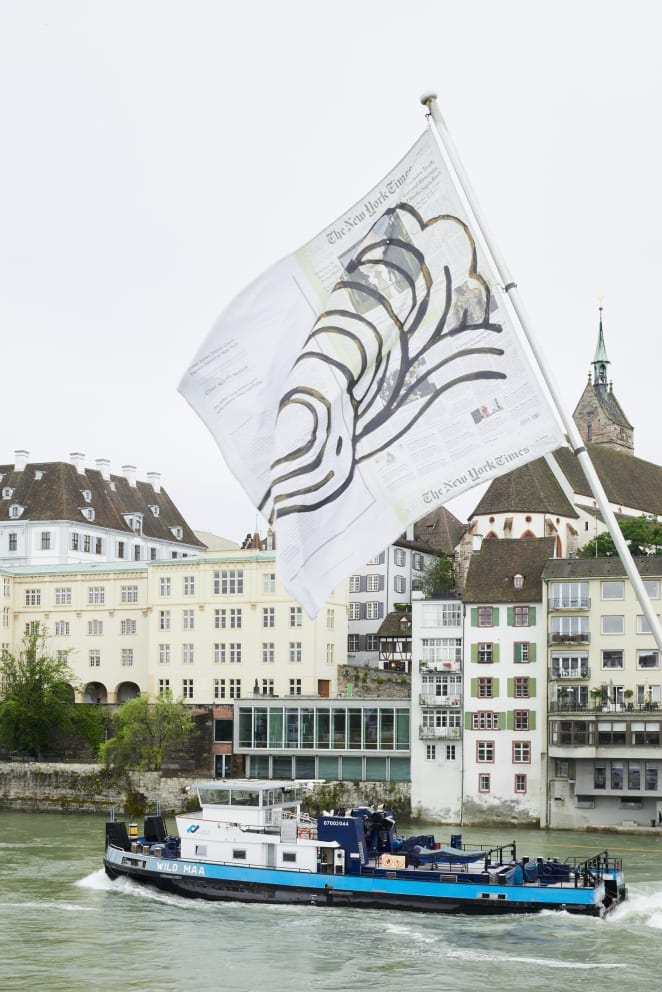
Lois Weinberger, Portable Garden (1994—2022)
This installation is conceptualised by the late Lois Weinberger. It consists of c.100 checkered plastic bags filled with local soil, mixed with grains and seeds dropped in by birds and wind. Overtime, a garden has slowly grown and the intention is that the plastic bags will erode completely, allowing the garden to seamlessly integrate with its urban surroundings.
The following works are part of the Basel Social Club programme which runs alongside but separate from the Art Basel fair. Now in its third iteration and held entirely outdoors for the first time, this week-long event is showcasing artworks across 50 hectares of farmland.
A full list of works can be found on their interactive map and a select few are highlighted below:
Gidree Bawlee Foundation, Dreamscapes (2024)
Gidree Bawlee Foundation is a collective from a village in northwestern Bangladesh. For their Basel presentation they are showing vibrant textile works made from reused saris. Salma Jamal Moushum, a representative of the Foundation, spoke fondly of presenting works outdoors: “In an institution, people have to be silent and follow protocols…At home, we install our projects outdoors and invite the neighbouring villages. It’s like a party.”
Margaret Raspé, Rain Drums (1988/2023)
Rain Drums (1988/2023) is an outdoor installation by the late Margaret Raspé. Since the 1960s, Raspé has explored climate and ecological issues through various mediums. This particular work welcomes wetter weather, featuring drums made of hazelnut branches and stretched cotton primed with beeswax. These drums are installed among trees, waiting to be activated by rainfall.
Markus Müller, Seasons of Compensation (Spring) (2024)
Markus Müller’s primary artistic focus lies in spatial representation. His work explores the potential of craftsmanship as both imagery and strategy in contemporary society. His sculptures, such as the current piece featuring an inverted steel couch suspended in the air, often subvert themes of daily routines by reintroducing them into urban environments in unconventional ways.




